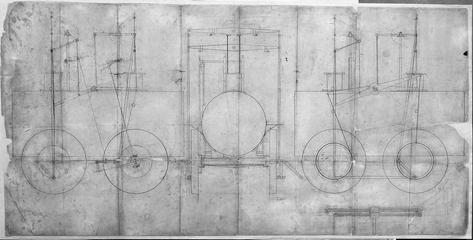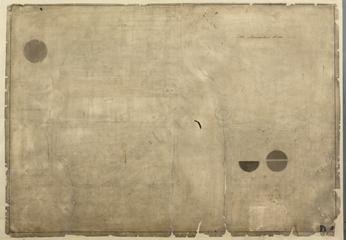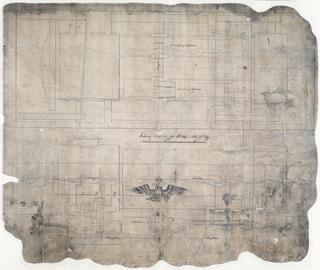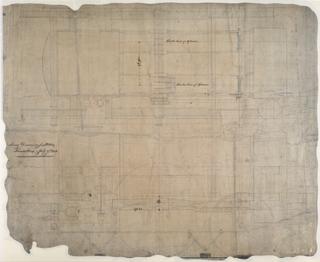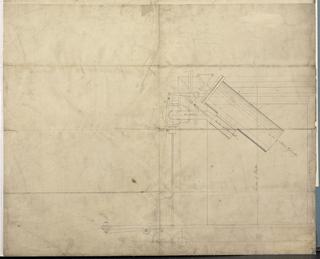
Robert Stephenson & Co Ltd
George Stephenson with his son Robert, and partners Edward Pease and Michael Longridge established the first locomotive works in the world, the Forth Banks Works, in 1823. The original factory occupied eight acres adjacent to Forth Street, Newcastle-on-Tyne, much of its machinery being designed and built by George Stephenson. Between 1814 and 1825, George and Robert Stephenson were the only builders of locomotives in the country, the first - Locomotion No 1 – was for the Stockton and Darlington Railway, though it was Rocket’s triumph at the Rainhilll Trials in 1829 which established the works pre-eminence. Between 1824 and 1827, the Forth Street works were not limited to the manufacture of locomotives and there is evidence of wagons, wheels, and engines of all kinds being ordered. Locomotives were also exported to France and America following a visit to the works by engineers from both countries in 1828 and early 1829.
The first passenger locomotive – INVICTA (0-2-2) was built in 1830 for the Canterbury and Whitstable Railway. The Planet class (2-2-0s) with inside cylinders under the smokebox and outside frames was adopted as standard on the Liverpool & Manchester Railway, further developed in 1833 with a pair of trailing wheels fitted behind the firebox making it a 2-2-2 (the Patentee). The Patentee class was generally accepted as “the best of its day” (Warren, 1923). Orders for these two types were so numerous that many had to be passed on to other locomotive builders such as Tayleur & Co (later Vulcan Foundry). With the opening of the Liverpool & Manchester Railway, Charles Tayleur entered into a partnership with Robert Stephenson in 1832, although there is some indication that this lasted no more than a year or two. Associated with this partnership may be the discontinuation of the old series of works’ numbers in 1831 (up to c 40) and the commencement of a fresh series is evidenced in the order books (i.e. Samson old 34, new 14; Jupiter old 35, new 15; Goliath old 36, new 16). Another important development in this period was the appearance of the ‘long boiler’ type that resulted not only in a greater heating surface but a better ratio of tube length to tube diameter without increasing the wheelbase. In 1839 two 2-2-2s were supplied for Brunel’s 7ft gauge of the Great Western Railway. In 1846 when the works had 224 engines on order, railway mania was at its height.
By 1855 over 1000 locomotives had been built, the firm’s order books graphically reflecting both national and worldwide interest in their acquisition. A visitor to Newcastle in 1838 records “the marvellous manufactory of Mr Stephenson alone occupies four hundred workmen for the supply of steam engines to all parts of the world” (Lowe 1975). It is right to say that “where there were railways, very few had no locomotives from this builder” (Lowe 1975). George Robert, Robert Stephenson’s cousin, who had taken on responsibility for the firm’s orders on the latter’s death in October 1859, energetically pursued overseas’ companies through frequent absences abroad, adding the Australian continent, the Far East, Africa and South America to those countries already supplied.
A private company was formed in 1886, voluntarily wound up in 1899, and a new public limited company formed as Robert Stephenson & Co Ltd. The Forth Street works could expand no more and new works were built at Darlington on 54 acres of land. Although modern in their equipment, the works were laid out for small batch orders with locomotives being carefully built and quality coming before quantity. One of the important decisions of the new company was to remove locomotive building to Darlington, leading to the separation of the marine and boiler works. In 1902, the first of a long series of 2-8-0 heavy goods locomotives were built for India, soon followed by an exceptionally large 2-10-0 locomotive for Argentina. This began a remarkable series of engines, which became the prototype for large and successful classes of heavier locomotives.
At the beginning of the First World War some manufacture of munitions was undertaken but it soon became apparent, as military operations progressed, that locomotives for transportation were increasingly demanded. The firm fell victim in the early 1920s to many industrial disputes amongst suppliers leading to the cancellation of orders.
On 1 January 1937, Robert Stephenson & Co Ltd combined with R & W Hawthorn Leslie & Co Ltd, becoming Robert Stephenson & Hawthorns Ltd. The policy was to concentrate on the building of main line locomotives at Darlington and industrial locomotives at the Forth Banks works of the former Hawthorn Leslie Company. Standard 0-4-0ST and 0-6-0ST continued to be built in large numbers from 1938 for collieries, steel works, chemical plants and many other industries: war time requirements were such that the works were fully extended and very few orders were obtained from abroad.
In 1944 the Vulcan Foundry acquired a substantial holding in the company and later the two firms became members of the English Electric Co Ltd with works at Newton-le-Willows, Darlington, Newcastle, Bradford and Preston forming the main units of the railway traction division. The Forth Banks works, established in 1823, were closed in 1960 and all diesel and electrical locomotive building concentrated at Darlington. The joint company built approximately 1000 steam locomotives. As from 1 January 1962 the works became the English Electric Co Ltd, Stephenson Works, Darlington: retention of the work’s name perpetuating the long association of locomotive building with George and Robert Stephenson. However, the last diesel locomotive left the Darlington Works in 1964.
